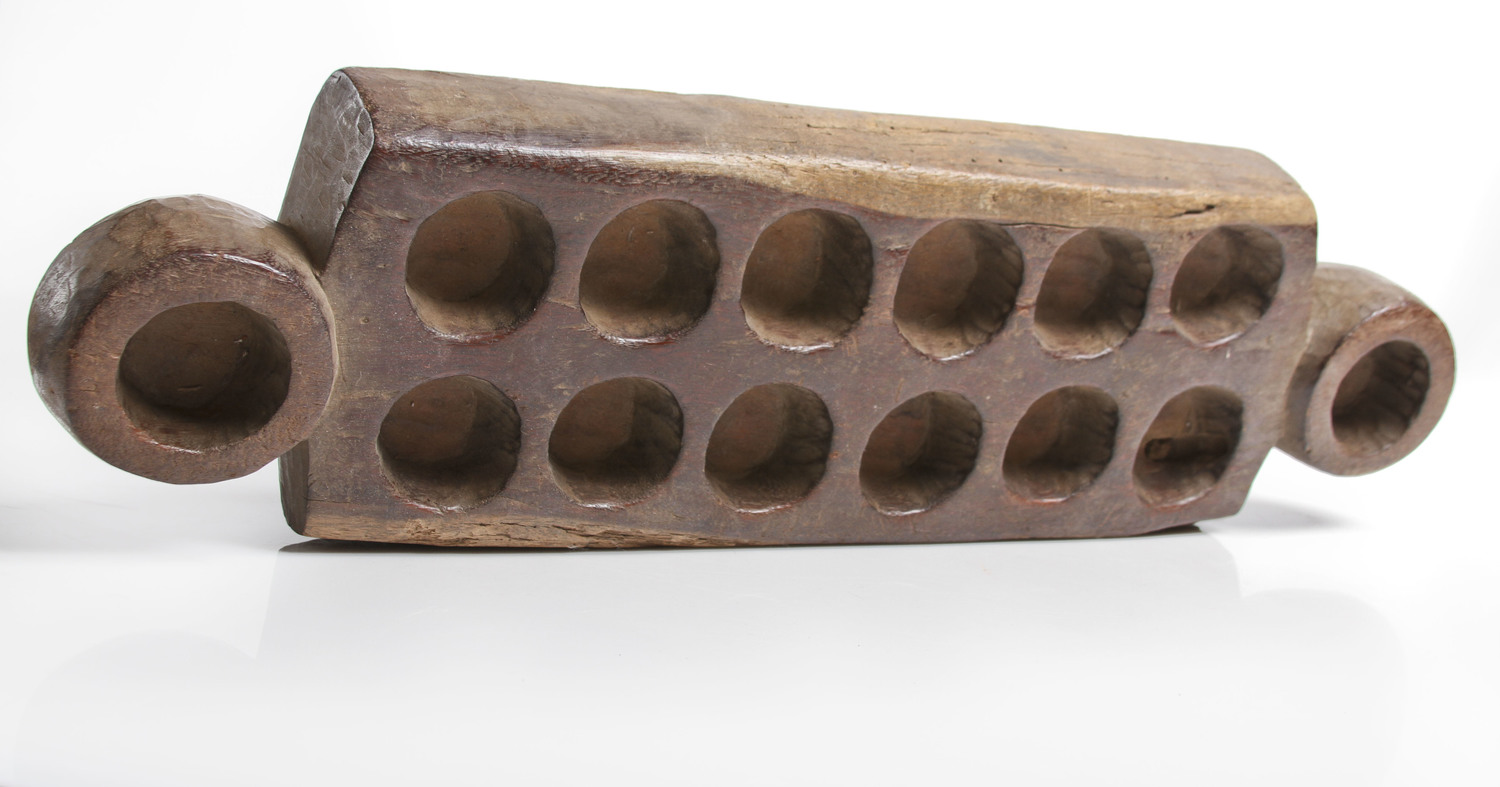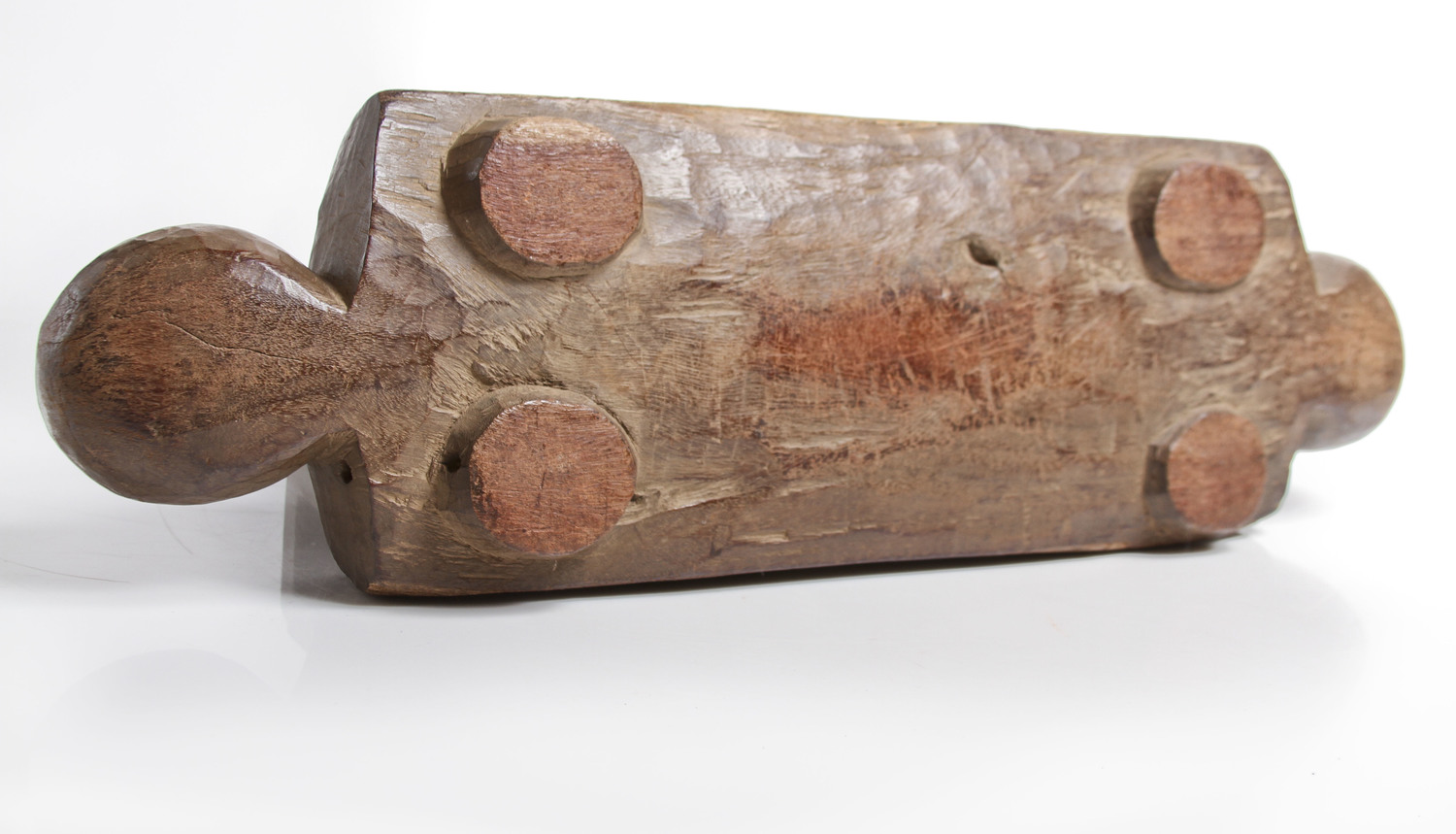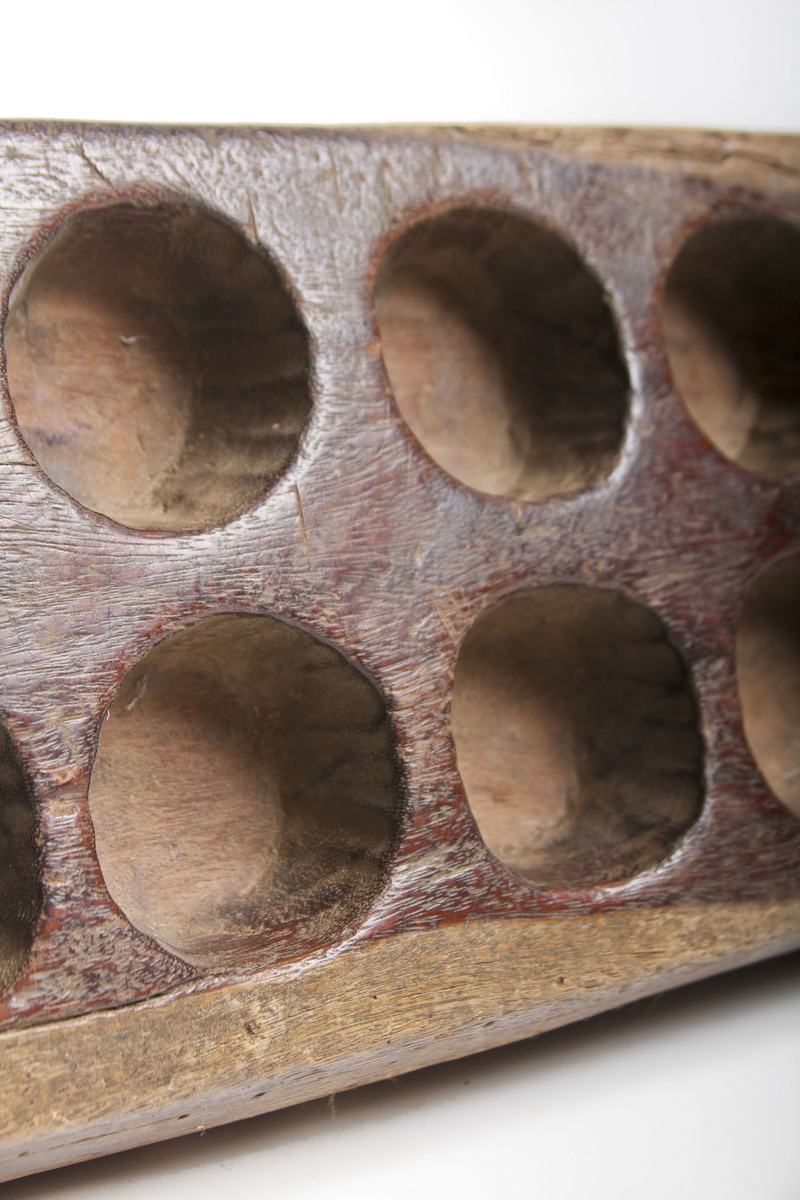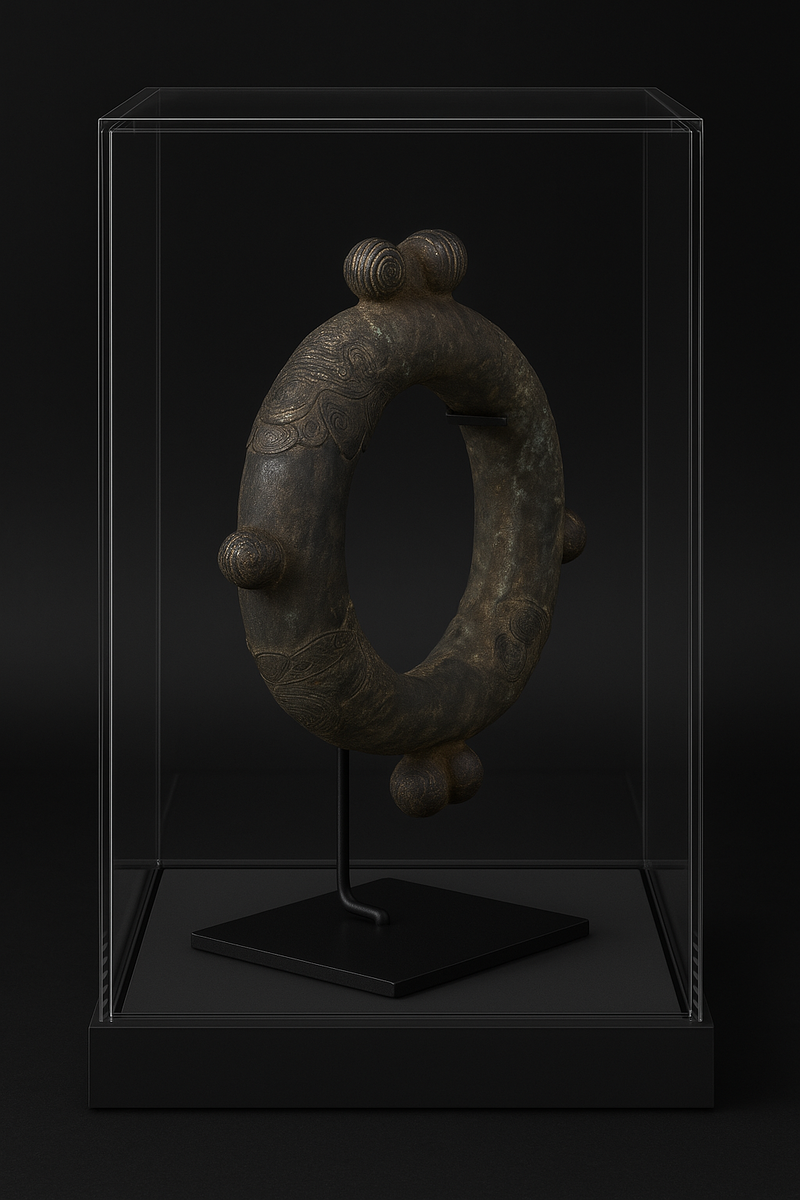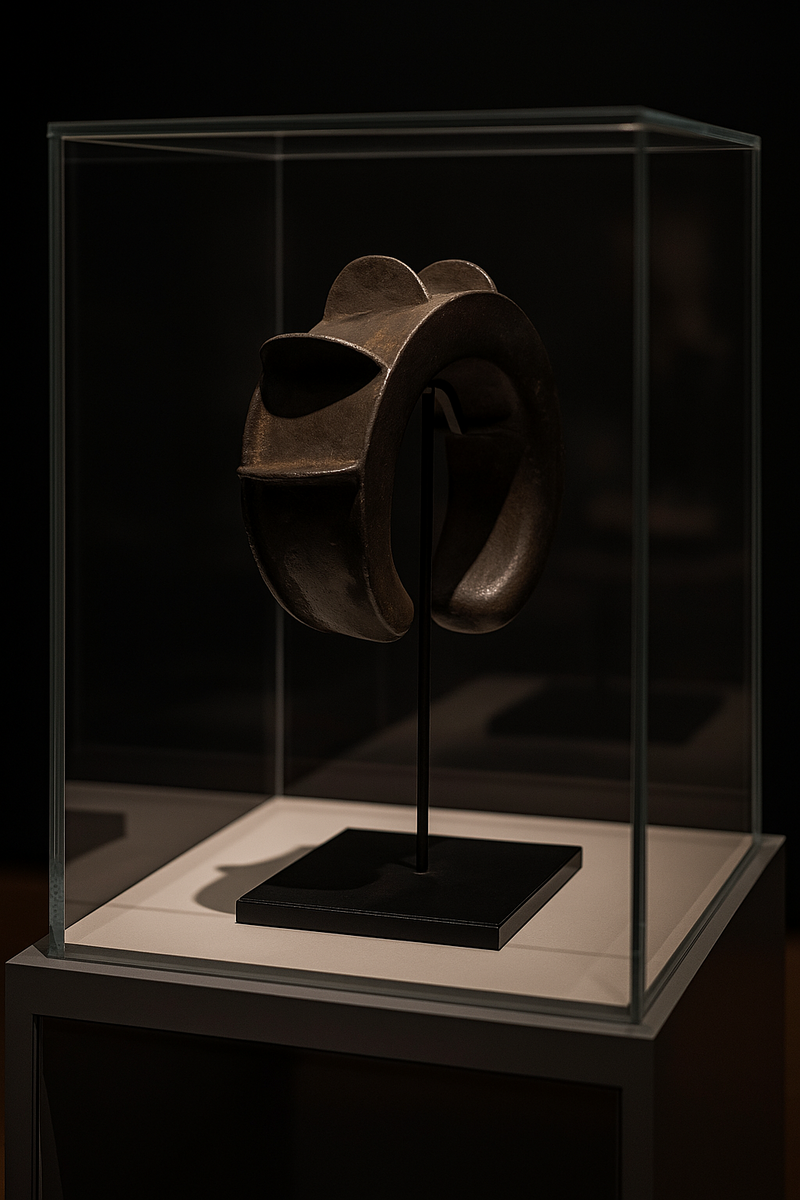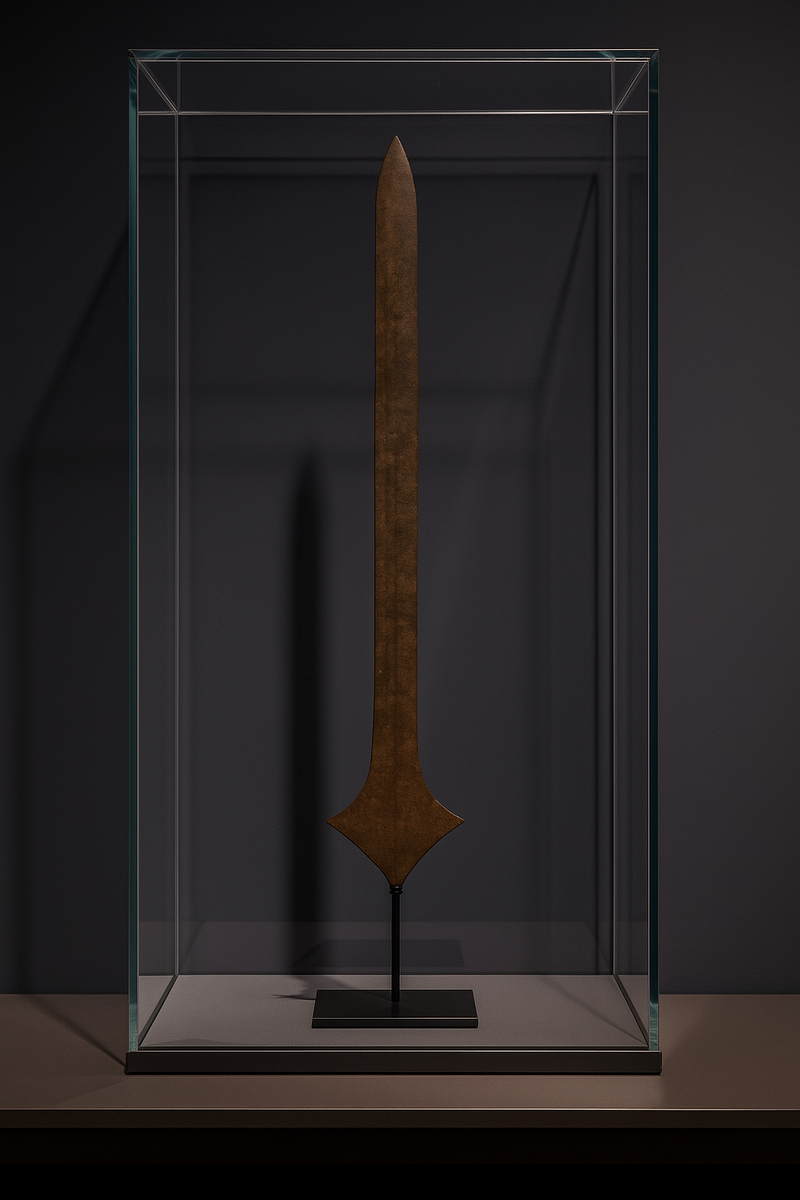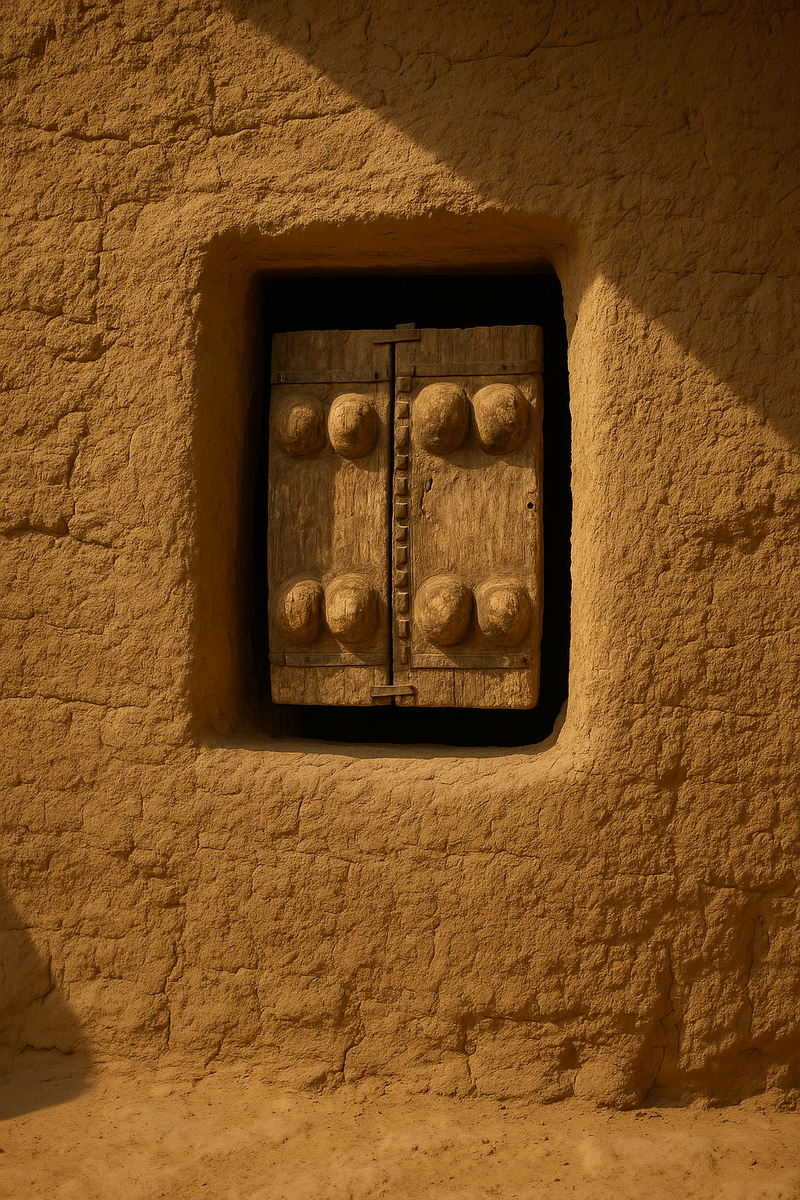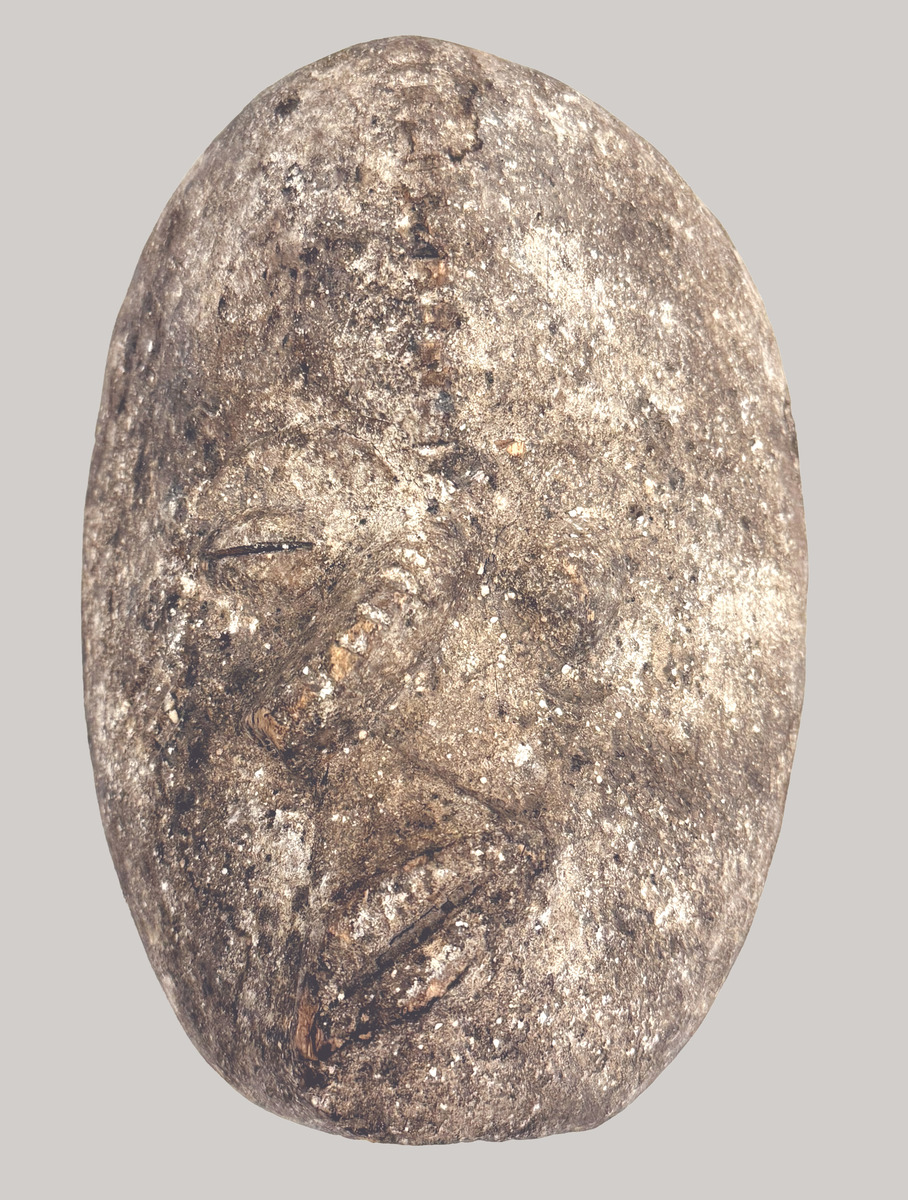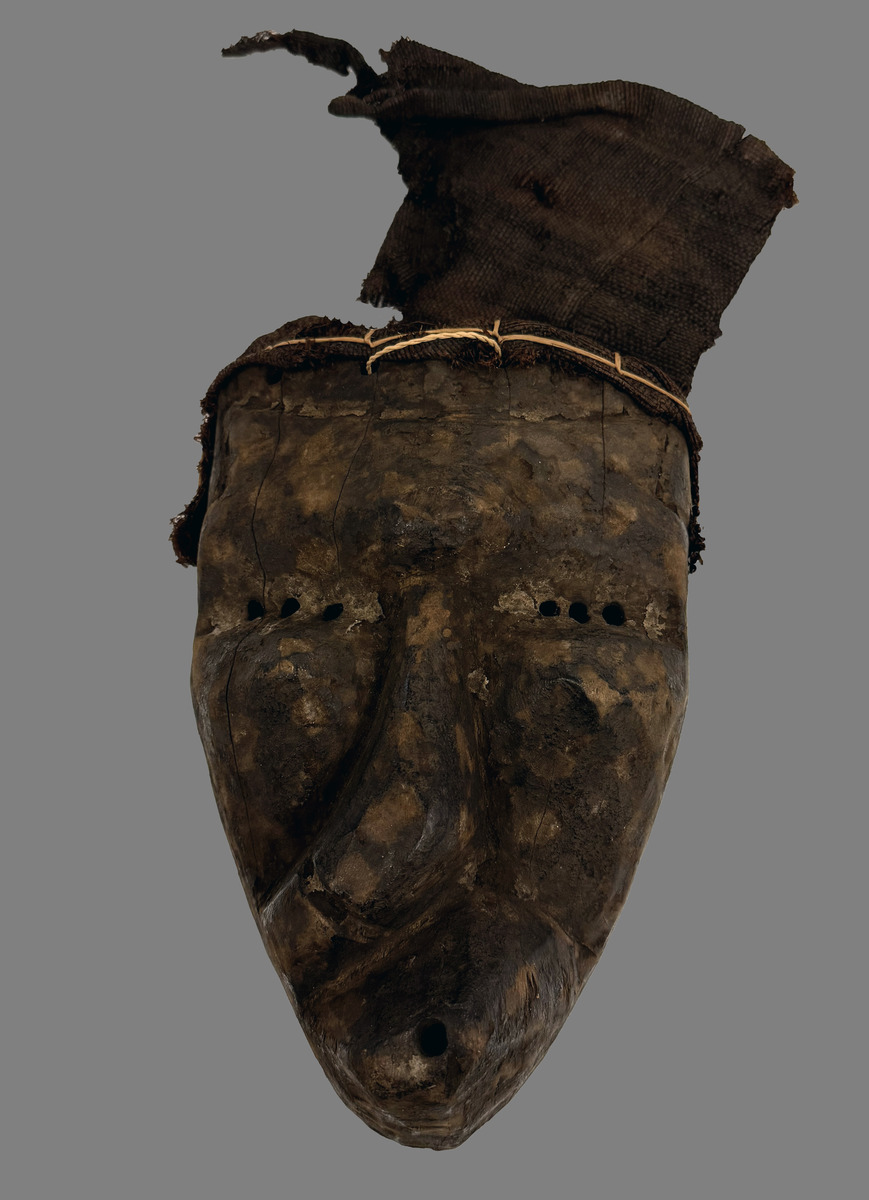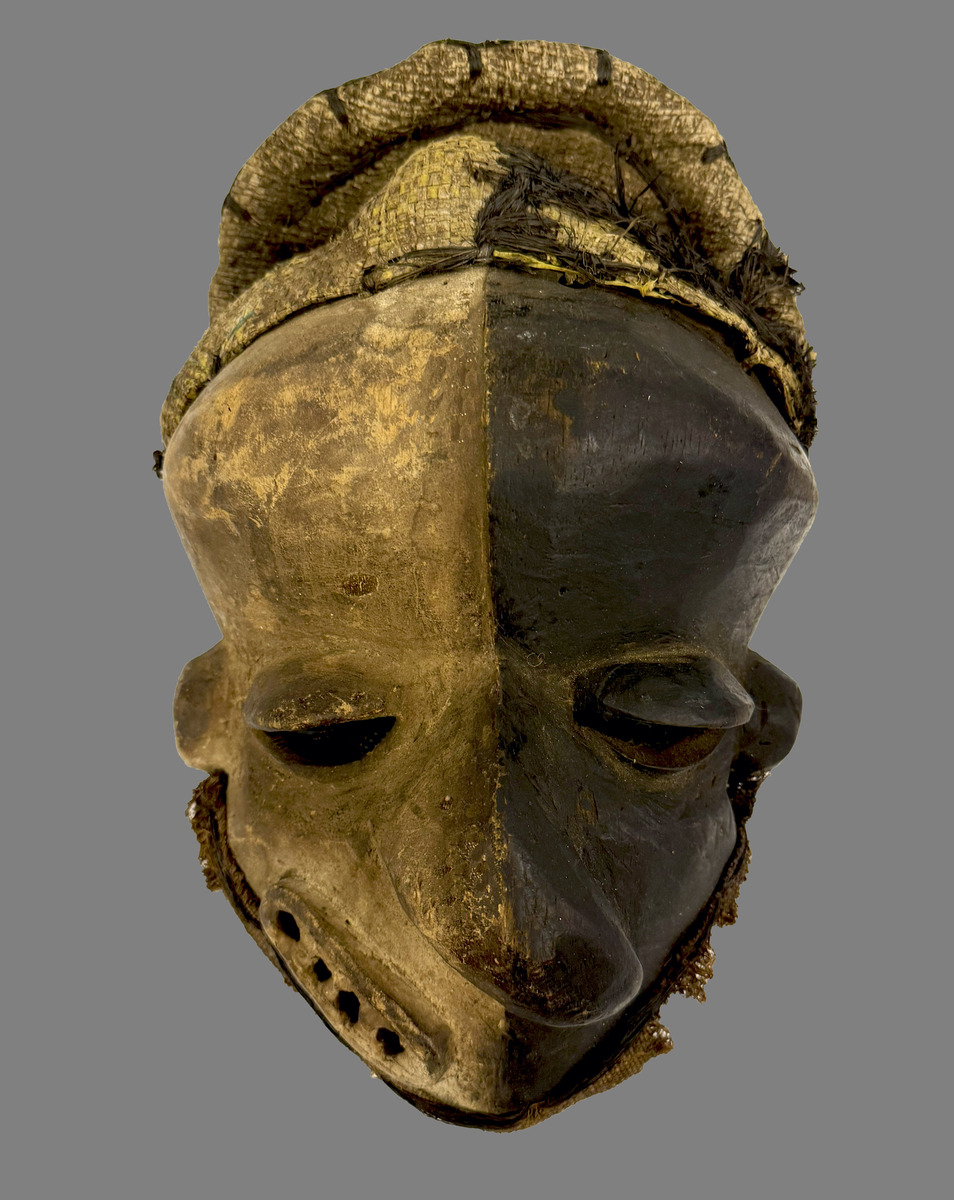Description
Carved from a single block of dense, dark hardwood — likely mahogany or a similar indigenous species — this Dogon mancala board, locally referred to as wali, reveals a deep interweaving of play, strategy, and social cohesion. Its form is composed of two parallel rows of six round depressions, with larger circular cavities on either end — a configuration typical of mancala variants across West Africa. The board’s elegant symmetry and smooth, time-worn patina speak to both its tactile engagement and cultural value.
Among the Dogon people, wali is more than a pastime — it is a ritualized practice reflecting generational knowledge, agricultural cycles, and social bonding. Played traditionally by men, often under the shade of a toguna (men’s meeting house), the game mimics the act of sowing and harvesting: seeds are “planted” from one pit to another in circular movements that echo the rhythms of millet cultivation. Victory, like farming success, depends on foresight, patience, and a deep understanding of cyclical patterns.
Importantly, boards such as this were not ephemeral objects but rather cherished communal items, passed down through generations. In some Dogon villages, elders played mancala to settle disputes, teach youth tactical thinking, or symbolically reenact creation myths tied to the Dogon’s complex cosmology. The central ridge of pits may also metaphorically reference ancestral lineage or the dualism central to Dogon philosophy, such as male/female, night/day, or earth/sky.
The present example, with its smoothly rounded forms and robust end-handles, exudes both refinement and functionality — a blend that reflects Dogon artistry at its most evocative. The board’s subtle variations in bowl size and form hint at its extended use and its creator’s hand, while the density and tonal richness of the wood elevate it to a sculptural object of enduring presence.
Comparable examples can be found in the collections of the Musée du quai Branly, Paris, and The British Museum, London.


